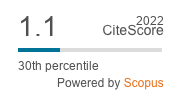La cartografía de la expedición Gilliss al hemisferio sur, Chile 1849 – 1852
DOI:
https://doi.org/10.4067/S0718-34022019000200211Abstract
In the mid-nineteenth century, Chile received the naval astronomical expedition of the United States commanded by Lieutenant James Melville Gilliss, whose purpose responded to the interest of universal science to determine a new measurement of the distance from Earth to the Sun. As a complement to his main mission, Gilliss wrote a description of the physical, economic, social and political characteristics of Chile that he got to know during his stay in our country between 1849 and 1852. As part of the
document there is an interesting set of plans and maps of Chile, largely compiled by the astronomer, which has the merit of being made with the current cartographic techniques that illustrate the geographical description of the country that he got to know and that he wanted to show the world. Through the analysis of these materials, this article aims to show the contribution of Gilliss in the development of these cartographies, and how all this contributed to consolidate the identity of Chile as a nation.








